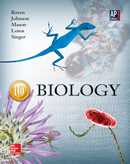1 A) gene architecture. B) cell wall structure. C) gene translation machinery. D) plasma membrane structure. E) all of these. 2 A) 100 B) 200 C) 500 D) 1000 E) 5000 3 A) pili. B) plasmids. C) endospores. D) autospores. E) gametes. 4 A) halophiles. B) myxobacteria. C) spirochetes. D) Nitrifiers. E) cyanobacteria. 5 A) a biofilm. B) a dentifrice. C) halitosis. D) a dontoid layer. E) annealed enamel. 6 A) cell membrane biochemistry. B) rRNA sequence comparisons between organisms. C) the method of obtaining and processing nutrients. D) a and b are mostly emphasized in the three-domain system E) None of the above is emphasized because molecular discrimination of different types of organisms is unambiguous. 7 A) to form a thick layer of hairs or pili, which insulate it from the environment. B) development of flagella to flee the dangerous area. C) establishment of endospores, which survive the stress and germinate when conditions improve. D) development of internal membranes which allow for a larger variety of biochemical reactions. E) hibernation until conditions improve. 8 + cell is put into a culture consisting only of F- cells,A) eventually the cell types will change until an equal amount of F+ and F- cells exist in the culture. B) the fertility plasmid will be passed from cell to cell much like a relay race, until all cells have hosted it at one time or another. C) almost all cells will become F+ , with a few of them becoming the Hfr type. D) the plasmid will integrate and excise into the chromosome of most of the recipient cells until genes are randomly distributed throughout the culture. E) F+ cells will have a selective advantage over the F- cells, eventually forming a new species. 9 A) the body destroys most of the antibiotics until a certain threshold has been consumed to allow treatment. B) if the antibiotics are prematurely stopped, some pathogens may remain alive due to their partial resistance to the antibiotic. Natural selection may reinforce this resistance. C) antibiotics are expensive, so not taking them all is a drain on health resources. D) the body may develop antibodies against the antibiotic and so increasing blood levels is essential to maintain its activity. E) taking the antibiotics over a long period of time will wear down the infection until it is too tired to continue being infectious. 10 A) breaking the triple bond in N2 gas and creating ammonia. B) decomposing dead organisms. C) deamination of polypeptide subunits. D) hydrolysis of starch. E) None of the above. 11 A) conjugation. B) transduction. C) transformation. D) transubstantiation. E) interchange. 12 A) linear, made of single-stranded DNA, and found in their nucleus. B) circular, made of singe-stranded DNA, and found in their nucleus. C) linear, made of double-stranded DNA, and found in their nucleoid region. D) circular, made of double-stranded DNA, and found in their nucleoid region. E) linear, made of double-stranded RNA, and found in their nucleoid. 13 A) True B) False 14 A) transformation. B) transduction. C) conjugation. D) All of these cause horizontal gene transfer. E) None of these allow horizontal gene transfer. 15 A) cells which can obtain their own food by engulfing other organisms. B) organisms which get their energy by harnessing the energy from spontaneous chemical reactions. C) cells which use energy from light reactions but obtain carbon from organic molecules. D) metabolic strategies during which carbon is harnessed from inorganic CO2 sources. E) metabolism involving organic carbon and energy sources.





